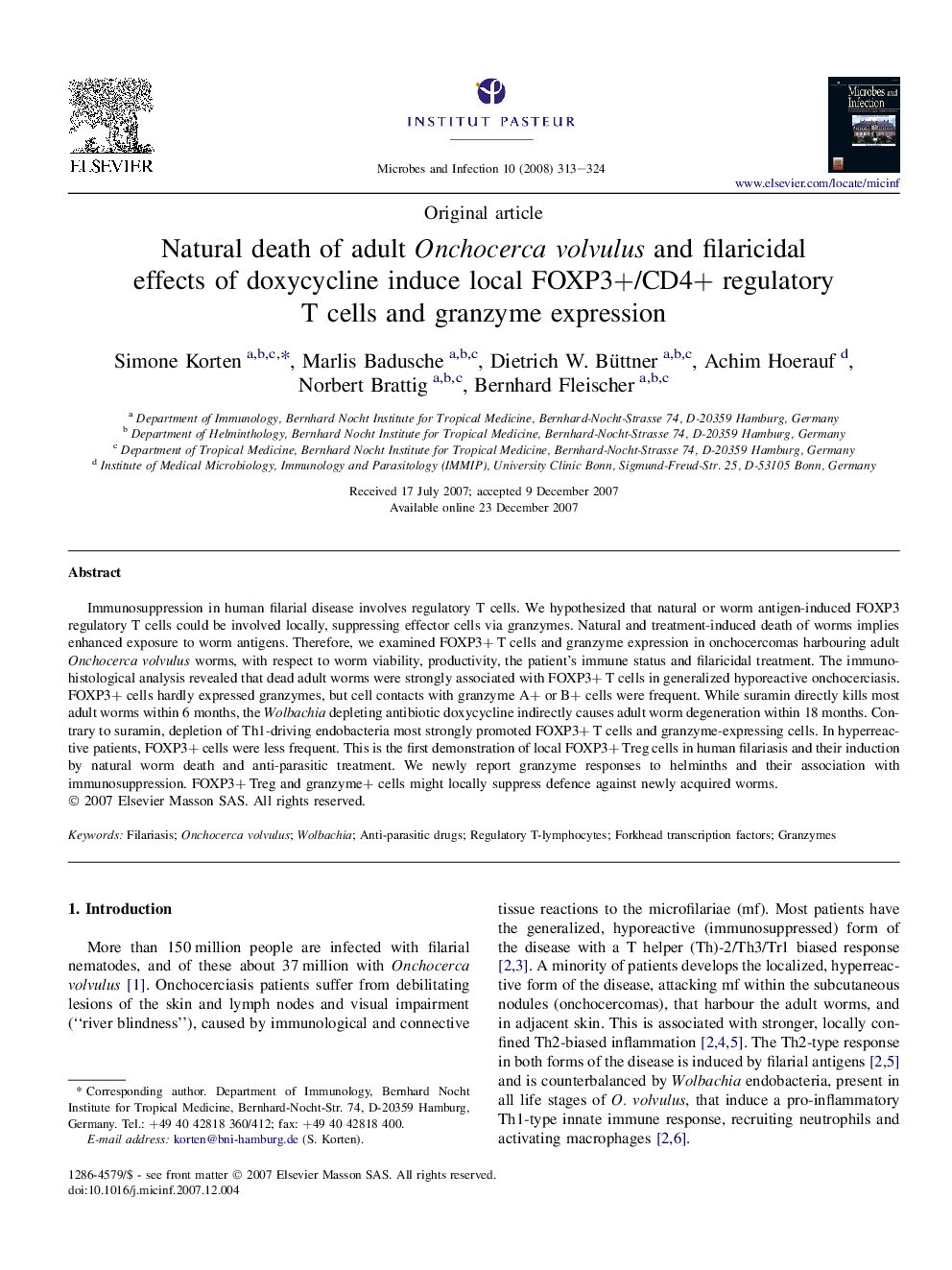| کد مقاله | کد نشریه | سال انتشار | مقاله انگلیسی | نسخه تمام متن |
|---|---|---|---|---|
| 3415364 | 1224956 | 2008 | 12 صفحه PDF | دانلود رایگان |

Immunosuppression in human filarial disease involves regulatory T cells. We hypothesized that natural or worm antigen-induced FOXP3 regulatory T cells could be involved locally, suppressing effector cells via granzymes. Natural and treatment-induced death of worms implies enhanced exposure to worm antigens. Therefore, we examined FOXP3+ T cells and granzyme expression in onchocercomas harbouring adult Onchocerca volvulus worms, with respect to worm viability, productivity, the patient's immune status and filaricidal treatment. The immunohistological analysis revealed that dead adult worms were strongly associated with FOXP3+ T cells in generalized hyporeactive onchocerciasis. FOXP3+ cells hardly expressed granzymes, but cell contacts with granzyme A+ or B+ cells were frequent. While suramin directly kills most adult worms within 6 months, the Wolbachia depleting antibiotic doxycycline indirectly causes adult worm degeneration within 18 months. Contrary to suramin, depletion of Th1-driving endobacteria most strongly promoted FOXP3+ T cells and granzyme-expressing cells. In hyperreactive patients, FOXP3+ cells were less frequent. This is the first demonstration of local FOXP3+ Treg cells in human filariasis and their induction by natural worm death and anti-parasitic treatment. We newly report granzyme responses to helminths and their association with immunosuppression. FOXP3+ Treg and granzyme+ cells might locally suppress defence against newly acquired worms.
Journal: Microbes and Infection - Volume 10, Issue 3, March 2008, Pages 313–324